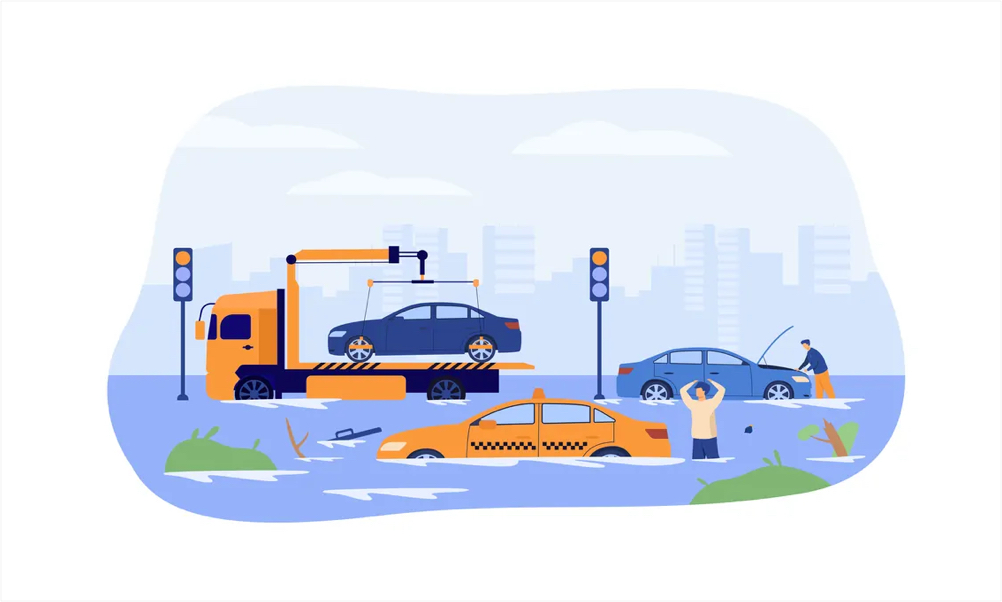Role of Technologies in Aiding People During Disasters

Table of Contents
A disaster is any sudden serious calamity or disruption, which can be relatively short or may even last for months. Precisely, a disaster could also be termed as an occasion that will occur anonymously at any time whose consequences are destructive and life-taking. In layman’s words, we will term disaster as a sudden unfortunate event that causes an excellent threat to everyone and anything.
What are the types of disasters?
A disaster may include any natural or man-made calamity like earthquakes, volcanic eruptions, tornadoes, tsunamis, droughts, floods, cyclones, landslides, wildfires, nuclear reactions, radiation blizzards, etc. which have social and biological negative effects on our ecosystem.
How can the disasters be managed, if not avoided?
- Through mitigation techniques which include activity that reduces the prospect of disaster or may reduce the disastrous effect of the unavoidable disasters.
- Through proper planning and confirming how prepared are we for the disasters, to urge adequate response and fast rescue service operations.
- Checking any approaching threat.
- Warning the people that are presumably to urge affected.
- How fast we answer any disasters which happen and the way precisely we take action plans which may save lives and damage to the properties.
- Educating the people about disaster preparedness.
- Collecting the food supplies, med care, and relief resources.
We should be ready for any damage which happens through disasters and the way fast we get over that. it’s the foremost important phase after a disaster and that we must skill should we get over that and begin everything again without many dilemmas to normalcy again.
Which areas are more disaster-prone and most suffered?
Those areas which lie near the seashore are considerably susceptible to calamities like floods and Tsunamis. Those areas which dwell in the tropical and sub-tropical areas which have a low-pressure center, rain, and powerful winds are more susceptible to hurricanes and cyclones. Those areas which lie along the continental plates and fringe of oceanic plates are more susceptible to Tsunamis, hurricanes, flash-floods, and water submerging. Nuclear and radiation accidents or incidents may occur thanks to poor judgment or wrong information within the areas which have nuclear reactors.
Mostly, disasters happen everywhere but the foremost suffered areas are usually those which are poor and socially impaired basically the under-developed and developing countries.
How can technology help in determining disaster?
Technology now has certainly advanced tons and brought us new tools through which we will make urgent communications which are helping gracefully in emergency efforts and making the efforts more accessible and effective to all or any the general public and personal disaster management to hold out proper and agile med care to the victims and taking them back to the safe zone.
How does IT help in the case of disaster?
- IT nowadays is getting used altogether the fields. During disasters it’s of great help in managing the hospitals, like managing data, managing the occupied and vacant rooms, managing the doctors specified, the beds allocated to the victims, Electronic health records of the victims also helps within seconds which reduces human efforts and increases efficiency.
- During disasters, hospitals are the areas that are most vulnerable and have the critical infrastructure. this contemporary era of science and technology has certainly raised the bar and made hospitals smarter and efficient during disasters. Hospitals are now upgraded with digital transformations everywhere.
- There are many advanced Information Technology techniques like GPS(Global Positioning System), remote sensing, GIS(Geographic Information System), satellite communication which is of great use if any calamity strikes out.
- Internet may be a great means through which we will create social awareness and emergency events. There are many websites that will be accessed during a disaster and therefore the people can skill to beat the catastrophe and mark themselves safe.
- Remote Sensing and GIS are often wont to swap out the info and provide alerts and early warnings to plan for the strategies to manage and collocate relief work.
- The data from the satellite are often used for mapping earthquakes, water body configuration and monitoring post-flood surveys, and accessing the damage.
- There are many advanced forecasting systems that will be wont to monitor and forecast, and predict any unknown disasters.
- Through Seismological observations whose data are often wont to predict earthquakes and warn people.
What can be done if the internet breaks out?
1) NDIS phone SMS system
In India, the Multilingual Disaster Alert System – National Disaster data system (NDIS) has been developed first of its kind within the world which can transmit pre-warning of any disaster like cyclones, Tsunamis, floods in mobile phones within the sort of SMS that too within only 30 seconds when a meteorological satellite or seismograph gives an alert. The SMS created is of multi-language including the local languages which are spoken within the remote areas.
2) Satellite radios
Satellite radios are those sort of radios which use satellites to broadcast the news and reach to the very remote locations which can’t be accessed by the traditional radio channels.
3) Using IoT for communication during a disaster
Low power IoT devices and sensors have the potential to speak using Bluetooth, BLE, WiMax, ZigBee which suggests they have not to access the general public internet for connectivity and have the quality potential that they will connect with one another. There exists an opportunity that these devices can form a network of their own and may form an excellent means of functionality usually during those days of maximal hassle.
Technologies & Platforms Aiding Disasters
The recent cyclonic events of Taukte and Yaas in 2021 have impacted thousands of individuals. We all are conscious of the severe Kerala floods in India which happened in late August 2018 thanks to unusually high rainfall during the monsoon season. It had been one of the worst floods Kerala had ever seen. quite 450 people lost lives and millions were left empty-handed as they were evacuated.
1) Google
Google pin-dropped out an inventory of various centers providing the rescue operations including refugee centers, medicines, ambulances, food and water, volunteers, Jeep and Helicopter rescues, and other essential stuff among others. Google also released its Person Finder tool to look for missing people by filling in the necessary information about the person.
Google also highlighted a feature of Plus Code to assist the victims by sending 10 to 11 digit codes to volunteers. The code is really their exact location which is digitized and is accurate up to a couple of meters and may work without internet connectivity. The user has got to just zoom the map to maximum and it’ll automatically pin drop to their location helping the rescuers to seek out them.
2) Social Media
Who can forget the role of Twitter in the case of lack of Oxygen cylinder or injection supplies recently during the post-COVID pandemic? People created and contacted various groups for emergencies or help in these horrible times. Facebook also activated its feature check for Kerala which made the buddies and family know that they were marked safe. Facebook also created a crisis response page the viewed the news and video content from the general public and media.
3) Digital Wallets & Payments
Paytm developed a Kerala flood donation button which was linked to CMDRF’s account through which individuals everywhere in the world using Paytm can donate money to the government, volunteers, rescuers, and NGOs to assist rescue operations.
4) Mobile Service Providers
Many mobile service providers provided the help in the best way they will. They created a toll-free number where the rescuer or the volunteer has got to type the victim’s telephone number and that they can know the last location accessed by the victim.
Conclusion
Whenever nature strikes, we’ve to suffer tons. But with proper planning and integration, we will manage to vary the adverse effects. it’s surely changed the way how we live. By having proper knowledge of the technologies we will surely stand out safe and secure whenever a disaster strikes.
Let us know what you think of that too, we’d surely like to hear!!




